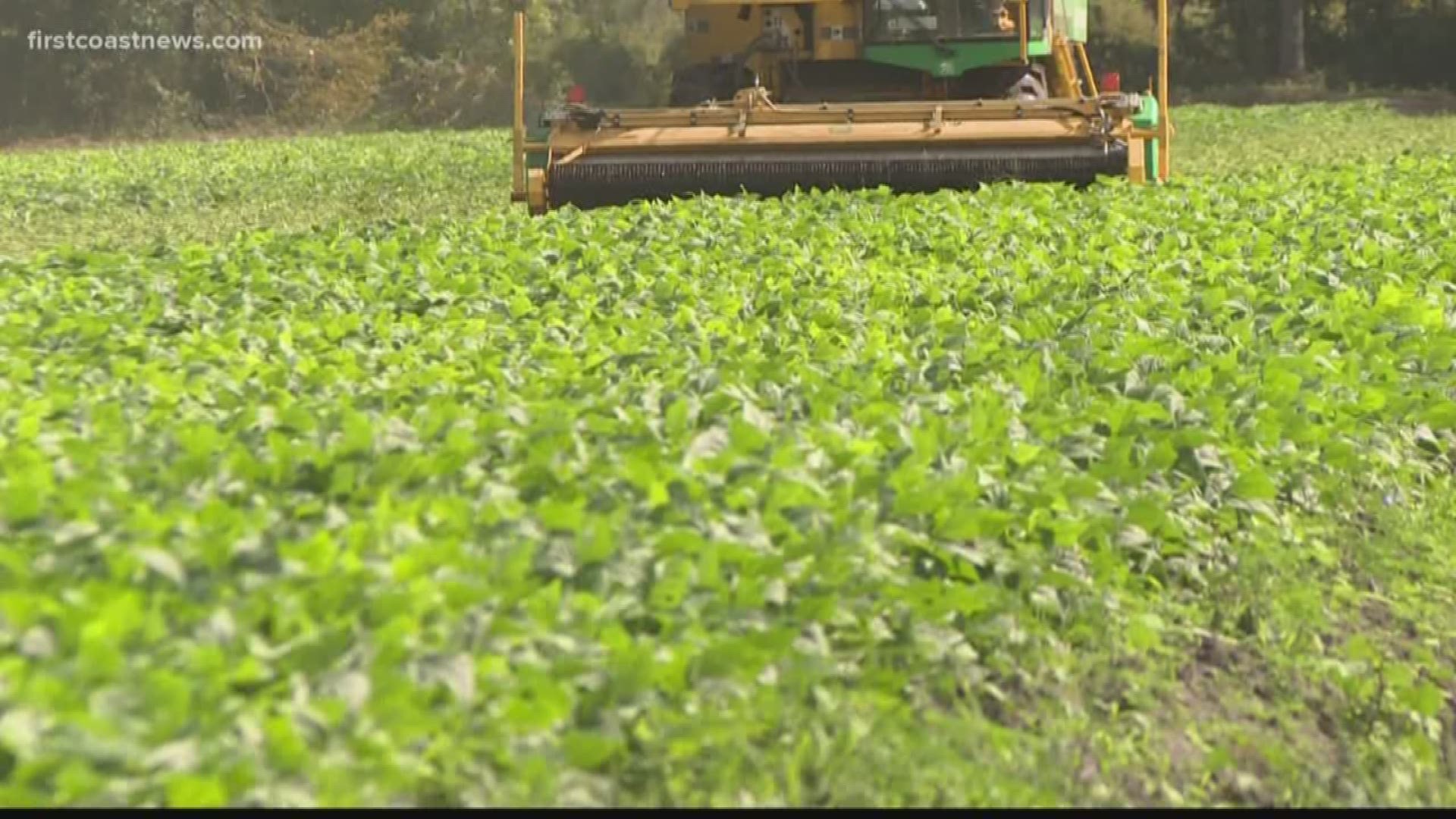ST. JOHNS COUNTY, Fla. — First Coast News is taking on a new project. We are following a local farmer for a year to show you where your food comes from as well as the challenges the now-rare farmer has in this country.
Here is the first story in the series: The Harvest.
"There's a lot that happens west of I-95," Bryan Jones said, "especially in St. Johns County."
About 30 minutes west of downtown St. Augustine, it's green bean harvest time at the Riverdale Farm.
Brian Jones loves to see it happen.
"I love watching it every time," he said, smiling as he drove his truck down the rural roads. "I mean, it's just fascinating."
Jones is a third-generation farmer in St. Johns County, from a family who primarily grows potatoes.
"We've had to diversify, as many of our farmers have, to find alternative crops to bring some extra income in for our farms," Jones said.
So green beans it is.
His family has 100 acres of green beans. They've been growing them for seven years, and harvest time is usually mid-November in northeast Florida.
"It's a fabulous time for us to make beans because people are getting in the holiday spirit and making dinners," Jones said. "And Green beans are just a wonder vegetable ... to pair with potatoes as well if you want!"
Large machines harvest the green beans
"It's a lot faster," Jones explained. "It's a lot more cost-effective. We have to keep our costs down as farmers."
The beans are loaded into semi-trucks and taken off to be sold fresh in grocery store produce departments.
It'll take less than a week to harvest the 100 acres. In one day, five-and-a-half semi loads of green beans will be harvested from this farm.
However, the harvesting machines aren't his or his family's.
Jones partners with another family business. He points to people driving the harvesters.
"There's Camilla there," he said. "Bill and Camilla have been picking beans for many, many years."
That business owns and operates the harvesting machines.
"Bill and Camilla travel up and down the east coast and they pick beans," Jones explained.
They all work with Eric Zunica who works for the company, which sells the beans.
"They need the beans," Jones noted. "We have the land, and they (Camilla and Bob) keep the harvesters running."
It's a three-way business partnership made up of different kinds of people who are all in the farming business, but it's a dying breed.
"There are so few of us farming, feeding what's approaching to be what 10 billion people," Jones said.
He agreed to let First Coast News follow him for a year because he's concerned people no longer understand where their food is coming from.
He also wants people to understand the importance of agriculture and of buying U.S.-grown food at stores.
"What we're after is getting U.S. commodities to your tables to help our farmers so we can stay in production," Jones said. "It is a matter of national security. We have to produce our own food. We don't want to be dependent on other countries for food."
He added that buying U.S.-grown food keeps farmers working, and it helps secure the industry in the U.S.
"If we lose ag," Jones said, "we're in big trouble."
This year, it's a plentiful harvest here. It's even making this farmer crave a certain kind of casserole.
To himself, he said, "I'm ready for some green beans."
Jones chuckled as he walked down a row of green beans on his farm.

